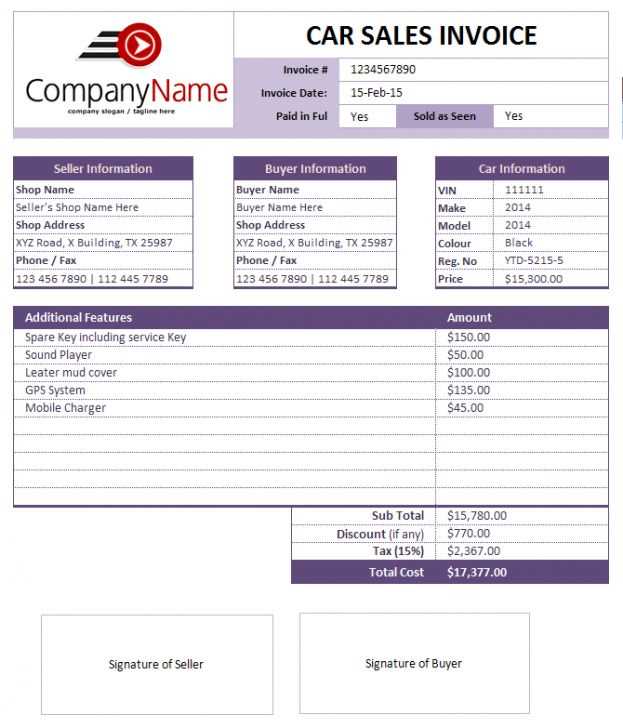
To create a clear and legally sound receipt for a car sale, include the buyer’s and seller’s full names, addresses, and contact details. Specify the car’s make, model, year, and Vehicle Identification Number (VIN) for proper identification. Add the sale date and total amount paid, including taxes or fees if applicable.
Ensure both parties sign and date the document to confirm the transaction. A clause stating that the vehicle is sold “as is” can help avoid future disputes. If there are warranties or guarantees, include these terms explicitly in the receipt.
For transparency, provide payment details, such as whether it was made in cash, by check, or through another method. It’s also a good practice to include a receipt number or transaction ID for reference.
Receipt Template for Car Sale
Creating a receipt for a car sale is simple, but it must contain key details to ensure the transaction is legally recognized. The receipt should include the full names and addresses of both the buyer and the seller. It should clearly state the car’s make, model, year, Vehicle Identification Number (VIN), and odometer reading. List the agreed-upon sale price, as well as the payment method used (cash, bank transfer, etc.).
Be sure to include the date of the sale and note whether the car is sold as-is, with no warranties. The document should be signed by both parties to verify the transaction. A simple template can streamline the process:
Receipt for Car Sale
Seller Information:
Name: [Seller’s Full Name]
Address: [Seller’s Address]
Buyer Information:
Name: [Buyer’s Full Name]
Address: [Buyer’s Address]
Vehicle Information:
Make: [Car Make]
Model: [Car Model]
Year: [Car Year]
VIN: [Vehicle Identification Number]
Odometer Reading: [Mileage]
Sale Details:
Sale Price: [Amount] USD
Payment Method: [Cash/Bank Transfer/Other]
Date of Sale: [Date]
Sold As-Is: [Yes/No]
Seller’s Signature: ______________________
Buyer’s Signature: ______________________
This receipt confirms the sale of the vehicle as outlined above. Both parties should retain a copy for their records.
Key Elements to Include in a Car Sale Receipt
Begin with the names and contact details of both the buyer and the seller. This establishes a clear record of the parties involved.
Include the vehicle’s identification number (VIN), make, model, year, color, and mileage. These details uniquely identify the car, preventing any potential confusion.
Clearly state the sale price of the car, along with the method of payment. Specify whether the payment was made in full, through financing, or by another method.
State the date of the transaction. This helps track the timeline and establishes the official transfer of ownership.
Provide a statement confirming the car is sold “as is” if no warranties are offered. If any warranties or guarantees exist, they should be clearly outlined in the receipt.
Include any relevant signatures, both of the buyer and the seller, confirming the completion of the sale.
If applicable, note any outstanding fees or taxes that have been paid or are due. This adds clarity to the financial transaction.
How to Format the Date and Transaction Details
Use a clear and straightforward date format such as “MM/DD/YYYY” or “DD/MM/YYYY” based on regional preferences. This ensures consistency and avoids confusion. The date should be placed at the top of the receipt for quick reference, ideally after the title or the business name.
Transaction Information
Include key details of the sale: the buyer’s and seller’s full names, vehicle make and model, VIN (Vehicle Identification Number), sale price, and payment method. The transaction section should be organized, with each piece of information on a separate line for clarity.
Additional Notes
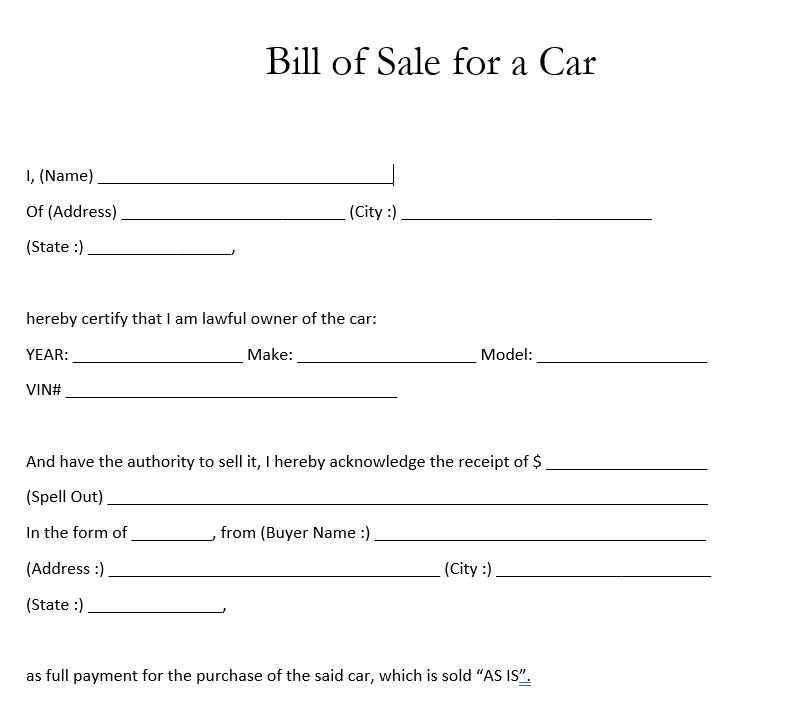
If there are any specific terms agreed upon, such as warranties or conditions related to the sale, mention them clearly at the bottom of the transaction section. This avoids misunderstandings and provides transparency.
Including Buyer and Seller Information Properly
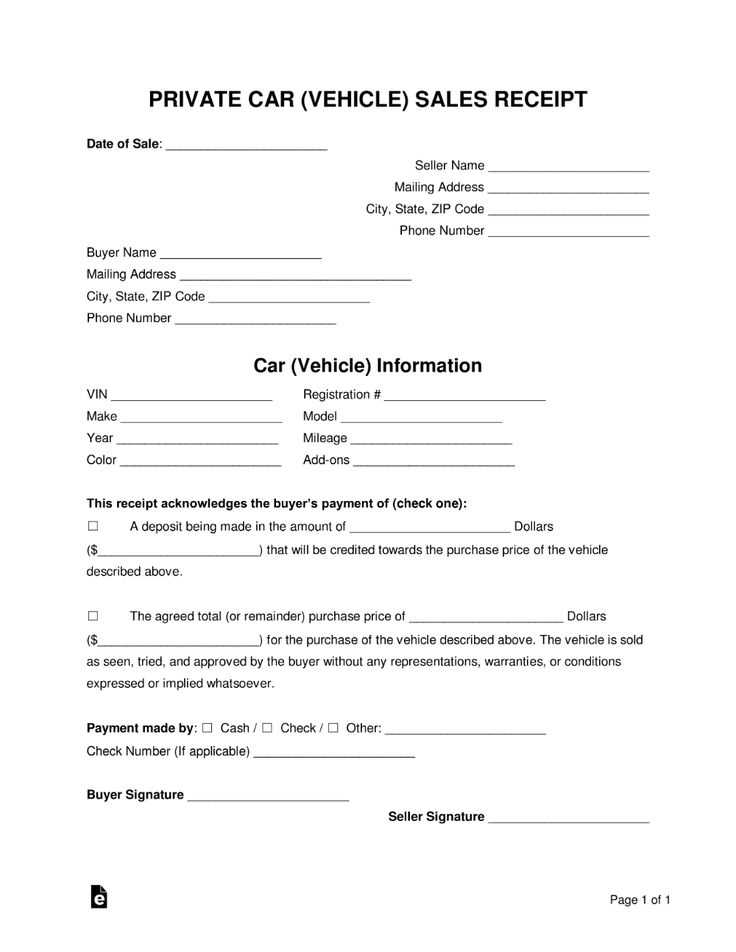
Clearly displaying buyer and seller information is crucial for a smooth transaction. Ensure that both parties’ full names, addresses, and contact details are accurate. This avoids potential disputes and ensures legal validity. Always confirm that the buyer’s and seller’s information is up-to-date, including their legal addresses and any other identifying details, such as a driver’s license number or a national ID, if applicable.
Buyer Information
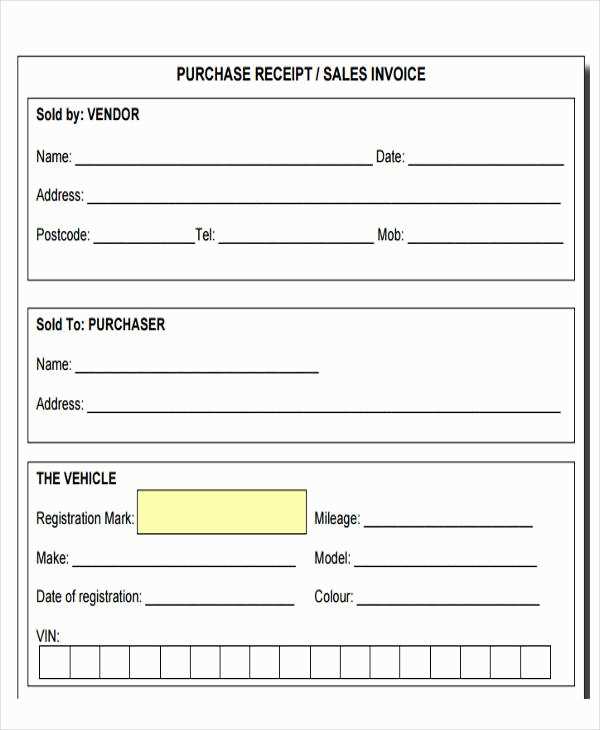
The buyer’s section should include the following details:
- Full name
- Address (street, city, postal code)
- Phone number
- Email address (optional)
- Identification number (optional)
Seller Information
The seller’s section should include similar details to those of the buyer:
- Full name
- Address (street, city, postal code)
- Phone number
- Email address (optional)
- Identification number (optional)
Be sure to match the names on the document with the official records for both parties, especially if the car’s title is transferred as part of the sale.
Sample Table of Buyer and Seller Information
| Information | Buyer | Seller |
|---|---|---|
| Full Name | John Doe | Jane Smith |
| Address | 123 Main St, Springfield, IL 62701 | 456 Oak Ave, Chicago, IL 60607 |
| Phone Number | (555) 123-4567 | (555) 987-6543 |
| [email protected] | [email protected] |
Having this information clearly printed will help prevent any confusion during the car sale and give both parties the documentation they need for future reference.
How to Document Vehicle Information Clearly
Record the vehicle’s make, model, and year first. These are the key identifiers that clearly distinguish one car from another. Include the Vehicle Identification Number (VIN), which is unique to each vehicle and helps verify its authenticity.
Document the mileage as accurately as possible. This is a critical piece of information, affecting the vehicle’s value. Make sure to note whether it is the actual mileage or if the odometer reading is questionable.
Details on Vehicle Condition

Describe the condition of the car in detail. Include information about the body (e.g., no dents, scratches, or rust), the interior (e.g., clean upholstery, no tears), and the mechanical condition (e.g., engine running smoothly). If the vehicle has any modifications or aftermarket additions, document these as well.
Service and Maintenance Records
If the car has a history of maintenance, provide records that include the type of services done and their dates. This reassures the buyer that the vehicle has been well-maintained, and adds transparency to the transaction.
Always note any accidents the vehicle has been involved in, as this is important for buyers. Detail any repairs made as a result, and provide documents if available.
Lastly, remember to include the car’s registration details, along with any legal documents that confirm ownership. This is critical for a smooth transfer of ownership and avoids confusion later on.
Ensuring Payment Method and Amount are Clearly Stated
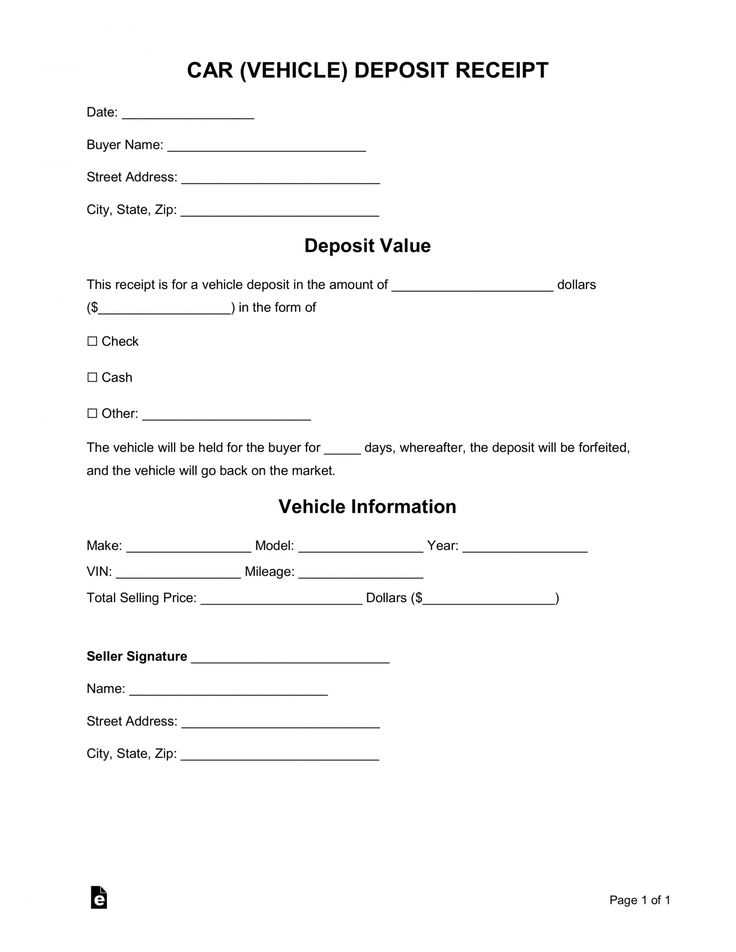
Clearly indicate the payment method and the exact amount on the receipt. Specify whether the payment is made by cash, check, bank transfer, or any other method. This avoids confusion and guarantees transparency for both parties involved in the car sale.
Payment Method
Clearly list the payment method used in the transaction. If paid via bank transfer, include the transaction reference number. For cash payments, write “cash” to avoid any ambiguity. If a check is involved, include check details such as the check number and bank information.
Payment Amount
Ensure the total amount paid is listed in both words and figures. This ensures no errors in interpreting the amount and confirms the agreed-upon price. Include any relevant taxes or additional fees as separate line items, making it clear what each charge represents.
Legal Considerations for the Car Sale Receipt
Make sure the receipt includes specific details to protect both parties in a car sale. A clear, concise receipt can help prevent future disputes and ensure the transaction is legally binding.
Include Essential Information
- Buyer and Seller Information: Names, addresses, and contact details for both parties must be listed clearly.
- Vehicle Details: Include the vehicle’s make, model, year, VIN (Vehicle Identification Number), and current mileage.
- Transaction Amount: Clearly state the sale price agreed upon and the payment method (e.g., cash, bank transfer).
Address Ownership Transfer
- Statement of Ownership: Ensure the receipt mentions that the seller has transferred ownership to the buyer.
- Signatures: Both the seller and the buyer should sign the receipt to confirm the transaction.
Incorporate these elements into your receipt to ensure that it serves as a legally binding document. Keeping a copy for both parties is advised for future reference.


